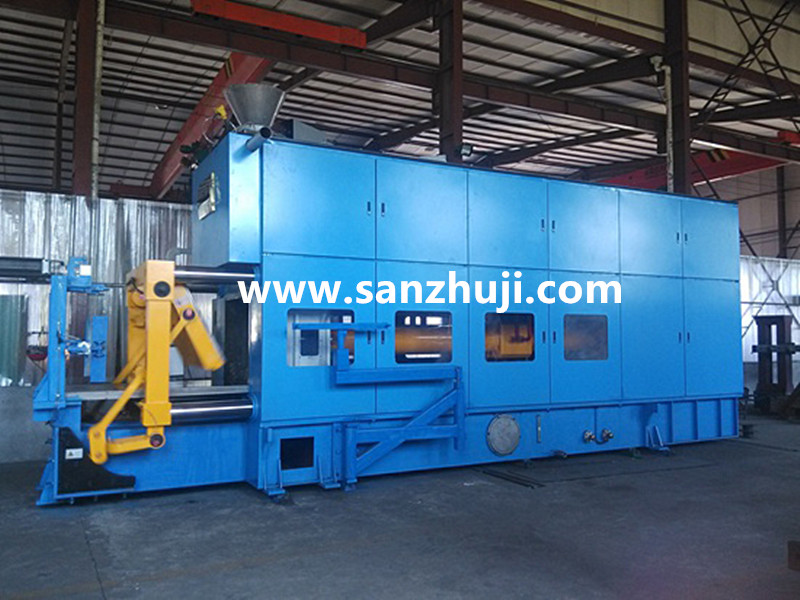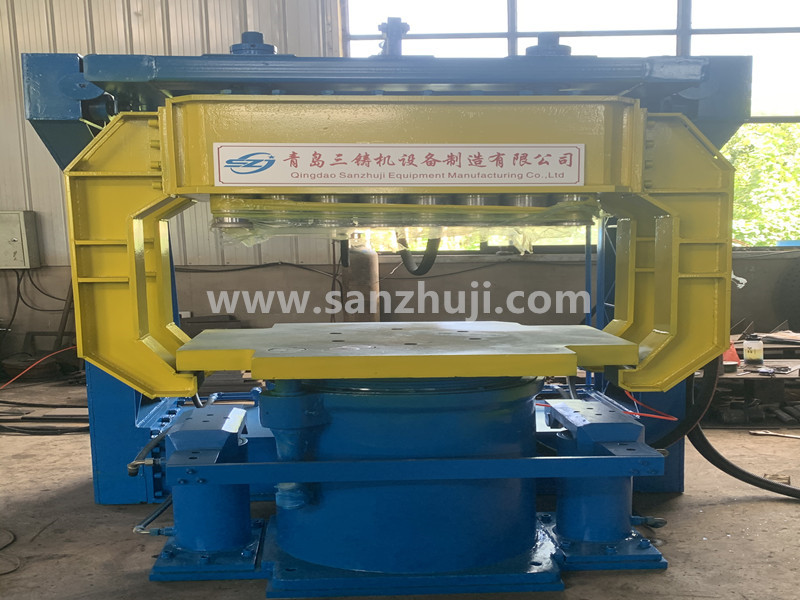When furan resin sand is used to produce thin-walled and complex-shaped steel castings, one of the most likely defects is hot cracking. Sanzhuji combines the characteristics of furan resin sand recovery (regeneration) and furan resin sand recovery (regeneration). , The reasons are mainly divided into 3 points:
1. The furan resin sand has good fluidity and is easy to compact; the amount of resin added is small, and the adhesive film coated on the sand particles is thin, so that the sand particles expand by heat, and the thermal expansion rate of the sand core and sand mold will be higher than that of the water glass sand core (type )high.
2. After the furan resin sand is heated, the furan resin is carbonized and coked in a reducing atmosphere to form a hard coke skeleton, which can improve the thermal strength of the sand core (for example, the compressive strength of the furan resin sand at 1000 ℃ is 5 -10 times), which seriously hinders the concession of the sand core (type). The higher the content of furfuryl alcohol in the furan resin (the lower the nitrogen content), the greater the thermal cracking tendency of the casting, because furfuryl alcohol increases the thermal decomposition temperature of the furan resin, reduces the thermal decomposition rate of the furan resin, and reduces the sand mold or core The collapsibility of the sand makes the sand mold or sand core more hinder the shrinkage of the casting, causing the hot cracking tendency of the casting to increase. Due to the wide range of the liquid-solid two-phase zone when the cast steel is solidified, the furan resin sand cast steel is more prone to hot cracking defects, especially for frame structures.
3. When furan resin sand is used, the use of p-toluenesulfonic acid as a catalyst will increase sulfur, thereby increasing the tendency of thermal cracking.
The shrinkage produced during solidification of high-temperature metal is greatly resisted by the sand core (mold), which causes stress and deformation of the casting, and the increase in sulfur on the surface of the alloy reduces the resistance to thermal cracking. When the stress or deformation exceeds the strength limit or deformability of the alloy at that temperature, hot cracks will form.
But for a specific casting, it may only be caused by some of the factors, so it needs to be judged according to the situation of the casting enterprise. In order to prevent or reduce the thermal cracking of furan resin sand, sanzhuji summarized the following 4 points and took measures according to the casting situation:
1. Alloy
(1) Control the sulfur content of castings, preferably below 0.03%, and avoid the occurrence of type II sulfides in the castings. (The sulfides in the steel castings are in three forms, namely type I, type II and type III. Among them, type II sulfides are distributed along the grain boundaries and are intermittent, which is easy to cause hot cracks in the casting.) By adjusting manganese and sulfur Recently, the distribution pattern of sulfur has been changed.
(2) For carbon steel parts, S+P should be made ≤0.07%, because the superimposed effect of sulfur and phosphorus increases the tendency of hot cracking.
(3) When using A1 for deoxidation, the residual amount of aluminum A1 should be controlled ≤0.1%; too high residual amount of A1 is conducive to the formation of A12S3, and may even form A1N, making the fracture of the steel "rock-like" and greatly reduced Thermal crack resistance of steel castings.
(4) The grain of steel can be refined. For example, adding rare earth and silicon calcium to molten steel can not only deoxidize, desulfurize, but also refine grains. The measurement of NiCrMoV steel shows that, under the same conditions, molten steel treated with rare earth + calcium silicon has more than twice the crack resistance of untreated molten steel.
2. Casting process
(1) When meeting the filling requirements of castings, try to reduce the pouring temperature of molten steel. For 0.19%C carbon steel, its thermal crack resistance is almost twice as high when cast at 1550°C than at 1600°C.
(2) For thin-walled castings, higher pouring speed should be used. For example, for a steel casting with a weight of 125Kg, a wall thickness of 15mm, and a pouring time of 14 seconds, no hot cracks will appear; cracks will be observed when it is extended to 40 seconds.
(3) Setting up anti-cracking ribs at the places where the castings are prone to cracks is an effective measure to prevent hot cracking of the steel castings.
(4) Loosening the box in time can also help reduce thermal cracking, because it can reduce the shrinkage stress of the casting.
3. Modeling materials
(1) Reduce the amount of resin added, or modify the resin to make the resin thermoplastic, so that the furan resin will not or less coke at high temperatures, so as to ensure its good high temperature tolerance.
(2) Add additional materials to furan resin sand to make the resin sand thermoplastic; or add wood flour and foam beads where the shrinkage is the most severely hindered; or put plastic retreat blocks in the corresponding parts of the mold to improve its High temperature retreat.
(3) Use phosphoric acid curing agent. Because the sulfonic acid curing agent can easily cause vulcanization on the surface of the casting, and cause microcracks on the surface of the casting, which becomes the source of cracks.
(4) Use modeling materials with a small thermal expansion coefficient, such as chromite sand instead of quartz sand.
(5) Reduce the thickness of the sand layer of the sand core (mold), such as using a hollow sand core. For example: For certain valve castings, only by reducing the thickness of the core sand layer and changing the connection method of the core bone, the hot cracking defect of the casting is eliminated.
(6) Reasonably use cold iron or find other chilling measures in places prone to cracks.
(7) Use paint that can effectively reduce sulphurization.
4. Casting structure
The shape and size of the casting are determined by the designer and cannot be changed by the manufacturer. However, for the size of the round corners, the treatment of the transition of the wall thickness, etc., you can consult with the relevant design department and make appropriate modifications according to the casting production requirements.
The above are the reasons and preventive measures for the thermal cracking of furan resin sand castings. I hope to help companies that use furan resin sand for steel casting production. At the same time, if you want to buy furan resin sand sand processing equipment, welcome to me Visit the factory area, we welcome guests to our production workshop to visit our production process
Qingdao Sanzhuji Equipment Manufacturing Co., Ltd. specializes in the production of sand reclamation equipment,foundry machines,Sand casting equipment,GS high efficiency rotary mixer,no-bake resin sand mixer,Jolt squeeze molding machine/Jolt-squeezing moulding machines,Multi- Piston Moulding Machine/Hydraulic multi-piston moulding machine,foundry molding machine,flaskless moulding machine,shot blasting machine,dust collector,according to the amount of old sand recovered Carry out plan customization, and provide sand reclamation equipment installation, commissioning, and training. Welcome guests to visit the factory.








